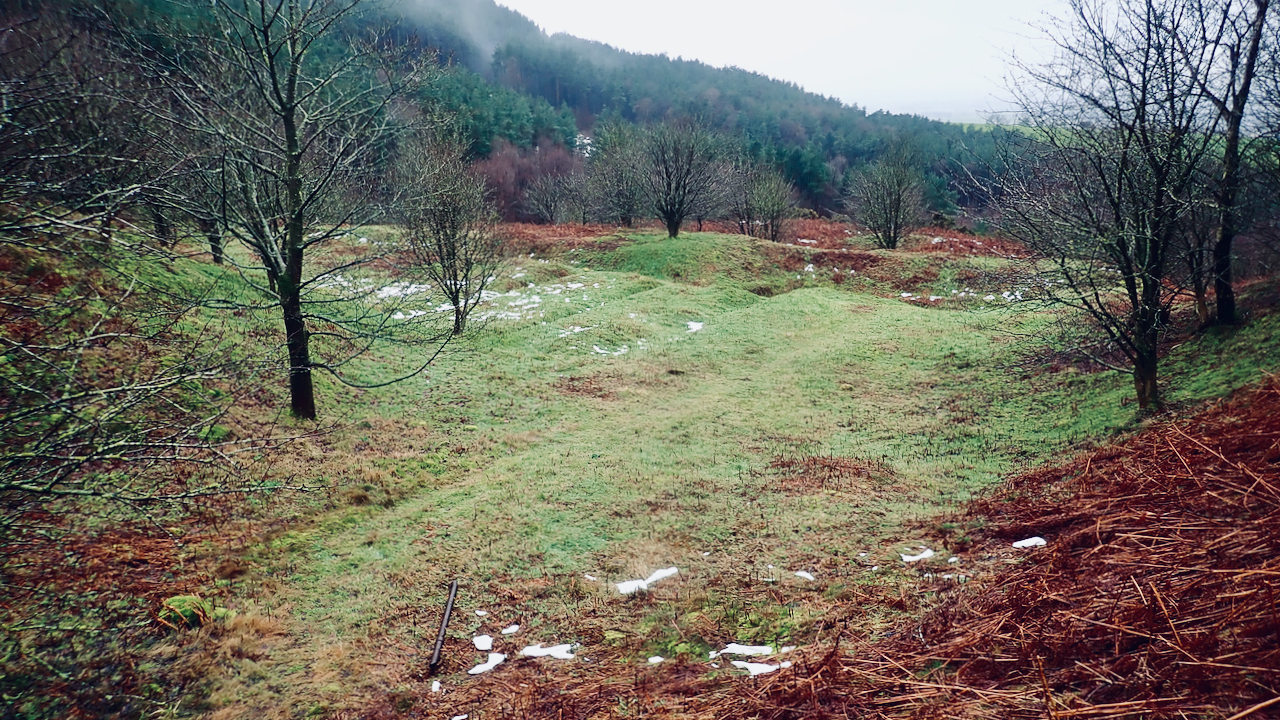While Capt. Cook was swanning around the South Pacific, back home in Great Ayton, a nascent chemical industry was burgeoning on the escarpment slope at Gribdale.
Alum, crystals of hydrated aluminium sulphate in combination with another alkali (usually potassium sulphate), was in much demand for a variety of uses: as a fixing agent in dyeing, fixing loose teeth, tanning, and as a contraceptive.
However the manufacturing was a long and drawn out process and when the price of the finished product collapsed, the workings at Ayton Banks was abandoned. It was was short lived but nevertheless it left a significant impact on the landscape.
The best time to view the site is in the winter after the bracken has died back which is why I ended up on Ayton Banks in the pouring rain.
The raw material is alum shale which is located below the sandstone layer. Once excavated it is formed with alternating layers of wood into huge mounds called clamps which are covered with a layer of clay and the wood set alight.
During the burning the alum shales undergo a chemical transformation. After several months, the clamps are opened and calcined shale transferred to seeping ponds where it is soaked in water to leach out the chemicals, a two stage process. Finally, the resulting liquor was run downhill in a wooden channel to the alum house below Gribdale Terrace where it underwent a boiling process before being left to crystallise. It took 50 tons of shale to produce 1 ton of alum.
In the photo, the five or so seeping linear ponds can be made out, leading to some stone lined cisterns. On the left is the lower slope of an unbroken clamp, thought to have been abandoned when the owner, Sir George Colebrooke, went bankrupt. The site had been operating for just 10 years from 1766 to 1776.

Leave a Reply